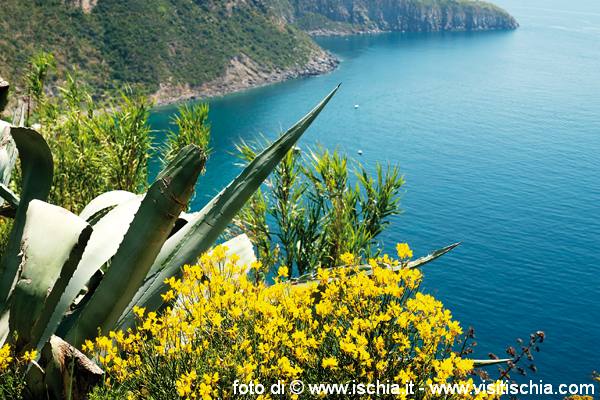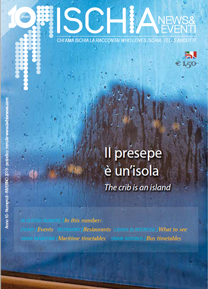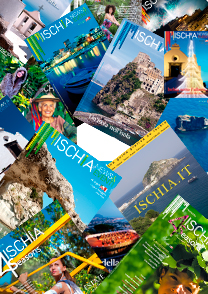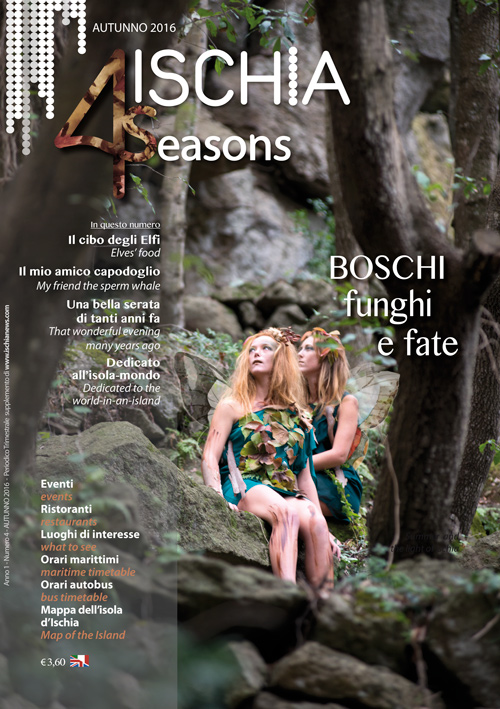The Alum path

The subsection of CAI Ischia has celebrated the arrival of summer, with an excursion that brought the group (consisting of all islanders, about twenty) to relive a piece of history of our beautiful green island. In this itinerary we covered the ancient Via Crateca, called by local farmers “Via dei Carri” that, once from Fango, in the municipality of Lacco Ameno, an old farming village and important site for the development of the island spa ...
(being an area of natural and man-made collection of mud, then used in the spa industry) led from the place of extraction of alum (Bianchetto, Monte Cito) to the processing areas (Piazza della Pera or “Caulare”). From the starting point, through a path (today a driveway!) Lined with wild roses, valerians, broom, myrtle, heather and mastic, one comes to the field of Monte Cito (220 m). From here the view can run free from Casamicciola to the promontory of Zaro (bringing us back to the Greek past of the island, called Pithecusae), passing through Lacco Ameno and coming to the mainland, bringing together in a single embrace the beauty of the Gulf of Naples. In Monte Cito it is worth pausing for a moment, not only to enjoy the beautiful landscape, but also to look carefully at the ground: it assumes, in fact, special colors ranging from white to purple and intense yellow, touching, one clearly perceives that emanates warmth and a strong smell of sulfur.
The gas present therein, is made for the most part by water vapor, but there are traces of other elements, such as the sulfates that generates alunite (a sulfate mineral), from which is obtained then the alum. In the field of fumarole, is also present a typical flora and in particular the cyperus polystachyus (papyrus of fumarole). Species of the cyperaceae family, similar to grasses, is an uncommon plant that lives in tropical and subtropical areas and in Europe only on the island of Ischia, where it adapts because has found common ground heated by fumaroles steam, and a microclimate, so hot and humid suitable to its growing needs. So it survives in winter in the fumarole areas in Ischia where it grows. We go on along the path between the blue of the sea that accompanies us to the left and the golden-green brushstrokes of thick woods to the right (given to us at this time by the flowering chestnut trees) that rise steeply on the steep slopes of the mountain. The complex structure of the isle land here has led to the creation of a network of connections (paths, mule tracks, steep steps), often dug in the rock layers, while the cultivated land, divided into terraces, supported by a typical dry containment masonry: the ‘parracine’. They are certainly a jewel of technical skill, knowledge of the area and use of the materials available. They were built with the green tuff, without the use of lime in order to allow the sliding of rainwater, thus preventing the flooding of land. We go on the path, then along one of these mule tracks ‘via dei carri’, which in historical times was used to transport the alunite from the mining area to the processing one and then to the port of Casamicciola.
The path is obviously bounded by the typical dry walls (‘the parracine’), obtained with the rocks of the green tuff of Pizzone. It is important the presence of one of them in particular that, hundreds of years old, thanks to a continuous and constant maintenance, retains its old charm and its former function. We make another stop at a winery in an old cellar dug into a block of tufa, which reminds us of the old island traditions and the wise use of resources in that land. The trail then winds through a forest of chestnut trees towards the valley and connected with the trail that leads to the working area. This deviation from the old path is due to the fact that the area has been affected by numerous landslides which have caused the interruption of the road with the places of extraction and the disappearance of a spring therein.
The area, however, still retains the morphology and the industrial-archaeological evidences of the past. The last stretch of land is unpaved and leads to the area of the so-called ‘Caulare’ (the boilers) paved with typical local rock (green tuff). We get to a sub flat area, covered with chestnut trees, where was located the processing industry of alum. Along the way are found lithic elements which seem unrelated to the geological context of the area, are in fact the scraps of the alum working. In this area are still found the processing vats of alunite. The best preserved has a diameter of about 5 meters and a height of 1 meter. The route, continuing through chestnut woods and connects to a narrow road that reaches the square of Via S. Barbara, from where you can enjoy a beautiful view of Casamicciola, Lacco Ameno and the mainland. We conclude our excursion with the arrival at Maio, ancient center of Casamicciola, from where one can reach the ancient thermal springs of Bagni and La Rita.









